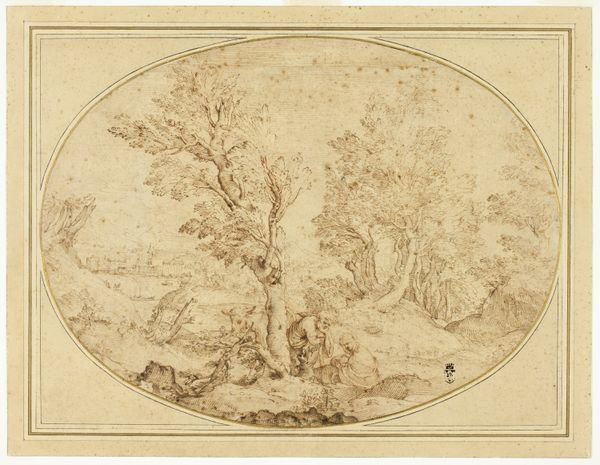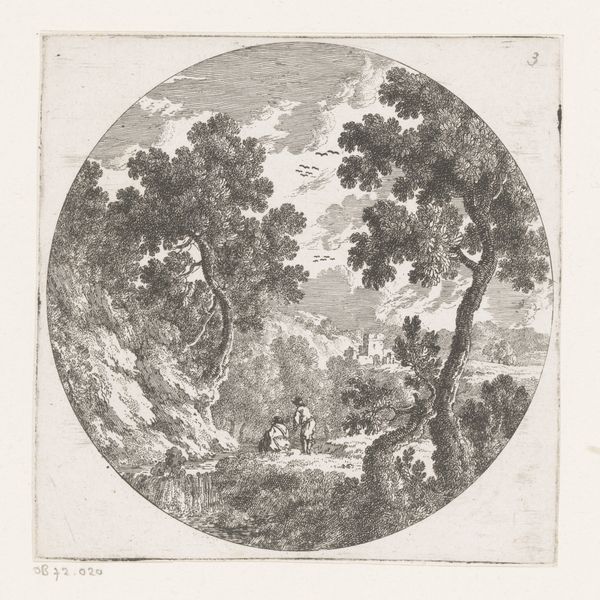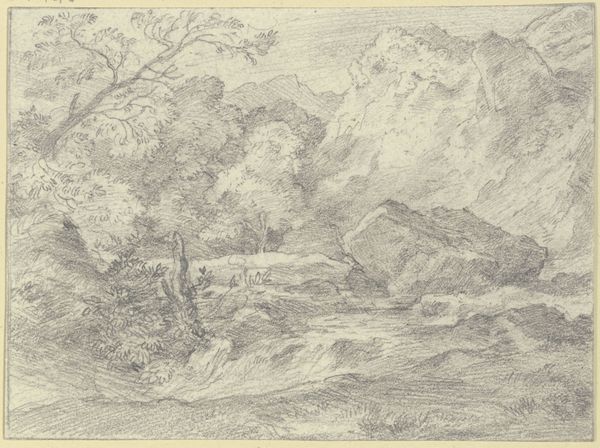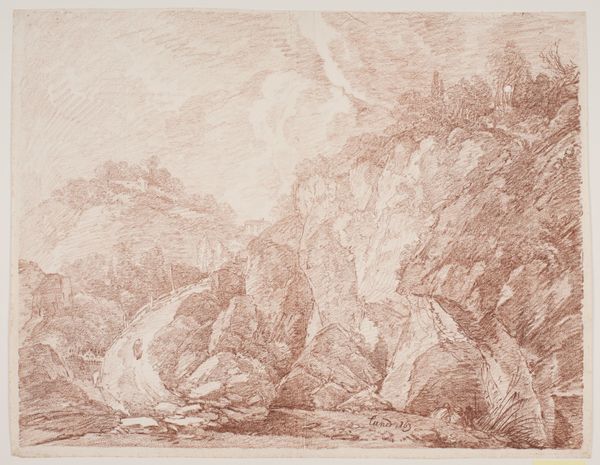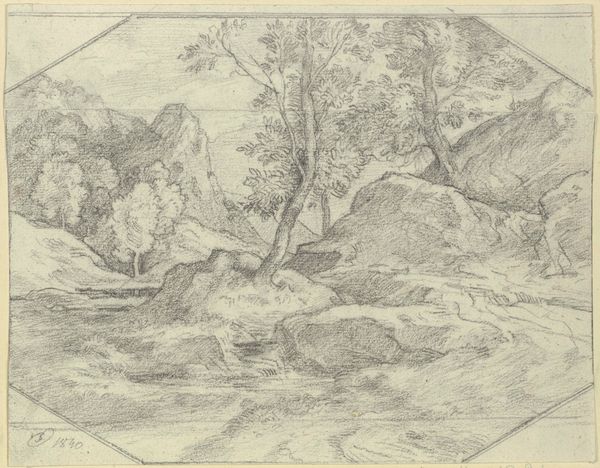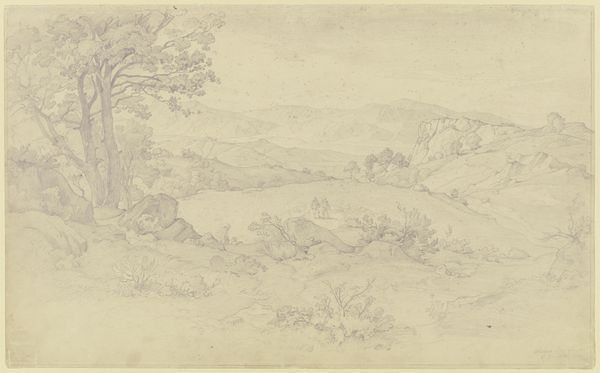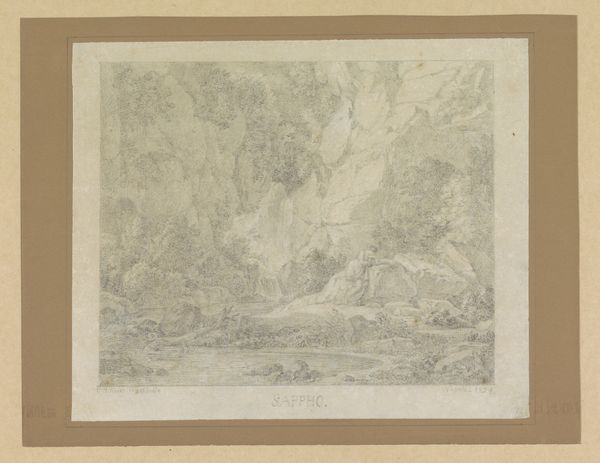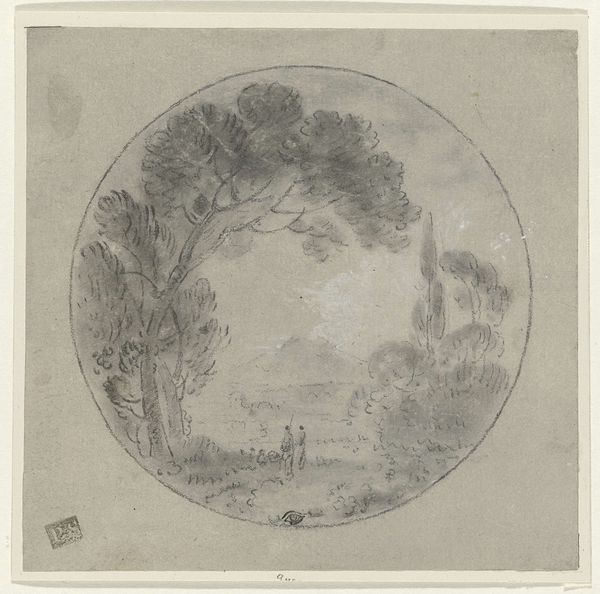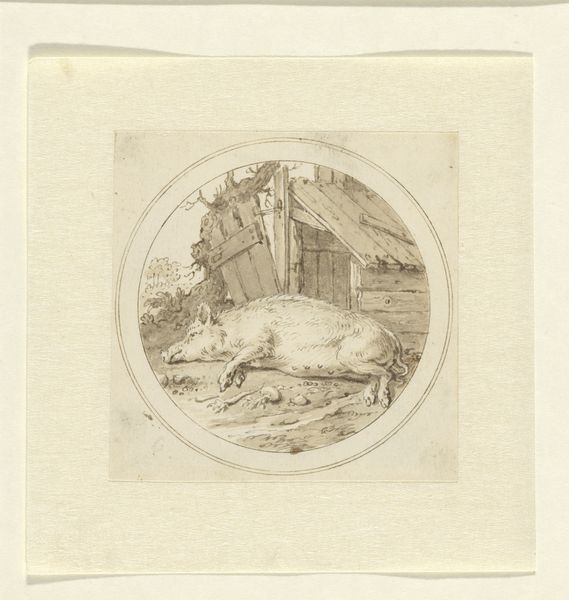
drawing, paper, dry-media, pencil, chalk, graphite
#
pencil drawn
#
drawing
#
16_19th-century
#
landscape
#
etching
#
figuration
#
paper
#
dry-media
#
romanticism
#
pencil
#
chalk
#
line
#
graphite
Copyright: Public Domain
Editor: This drawing, "Tree with a Rock, beneath which sits a Shepherd" by Ferdinand Olivier, dates from 1840. It’s a beautiful landscape rendered in pencil, chalk and graphite. It feels very self-contained with its circular border and quiet mood. How do you interpret the function of an image like this, especially within its historical moment? Curator: The image speaks to a very specific desire prominent in the 19th century: a longing for an untouched natural world. Consider its role in contrast to the industrial revolution; images like these created a romanticized idea of pastoral life. Notice how the shepherd is nestled *under* the rock; this placement implies the dominance of nature over humanity. How does that strike you, thinking about how we idealize that imagery even today? Editor: I see what you mean. We still have a powerful desire for that connection to nature, often absent in our daily lives. Does the medium – the fact that it’s a drawing and not a painting – influence this reading? Curator: Absolutely. Drawings like this were often more intimate, circulated among friends and within artistic circles. They weren't intended for grand public display in the same way as paintings. This suggests a more personal and contemplative function. Who was invited to see such scenes shapes the art itself. What do you suppose the impact was in limiting the scale? Editor: That makes sense; it becomes less about national identity and more about individual feeling. I hadn’t considered how the scale dictates the image’s sociability. Thanks! Curator: Indeed! Examining the conditions of display really opens up new perspectives. This reminds us that art never exists in a vacuum.
Comments
No comments
Be the first to comment and join the conversation on the ultimate creative platform.
